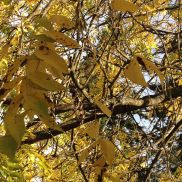“Pay attention,” is a demand most of us have heard from teachers, parents or spouses. It usually means, “Listen to me.” But paying attention means more than listening.
I attended a recent conference, in which speaker Linda Anderson Krech spoke about a rule she and her husband made about paying attention when taking a walk. While they moved from their home to the end of the driveway, they could bring up any topic. But once they’d left that zone, they could only talk about what they were noticing around them.
I shared her story with my husband on our last walk. Neither of us is interested in creating new rules, but we were intrigued by the notion of paying attention to our surroundings. Although we walk on busy streets, nature surrounds us. We pass by mini-forests, a tree-lined boulevard, plenty of home flower gardens, and an osprey nest, from which mournful cries arise every spring and continue through the summer. But how often do we really pay attention?
 More often than not, we carry on conversations about random events or walk silently, lost in our thoughts. On this keeping-our-eyes-open-and-mouths-shut walk, we noticed crops of shaggy mane and amanita mushrooms pushing up from under piles of fallen leaves. We commented on changes in trees since we’d last covered this territory, and felt energized by conversation that focused on our beautiful surroundings.
More often than not, we carry on conversations about random events or walk silently, lost in our thoughts. On this keeping-our-eyes-open-and-mouths-shut walk, we noticed crops of shaggy mane and amanita mushrooms pushing up from under piles of fallen leaves. We commented on changes in trees since we’d last covered this territory, and felt energized by conversation that focused on our beautiful surroundings.
Paying attention has value beyond seeing familiar objects through fresh eyes. I’m inspired to write more about this topic, but plan to portion it out, making it easier to hold readers’ attention.


Pingback: Pay attention and change your life | Still Life